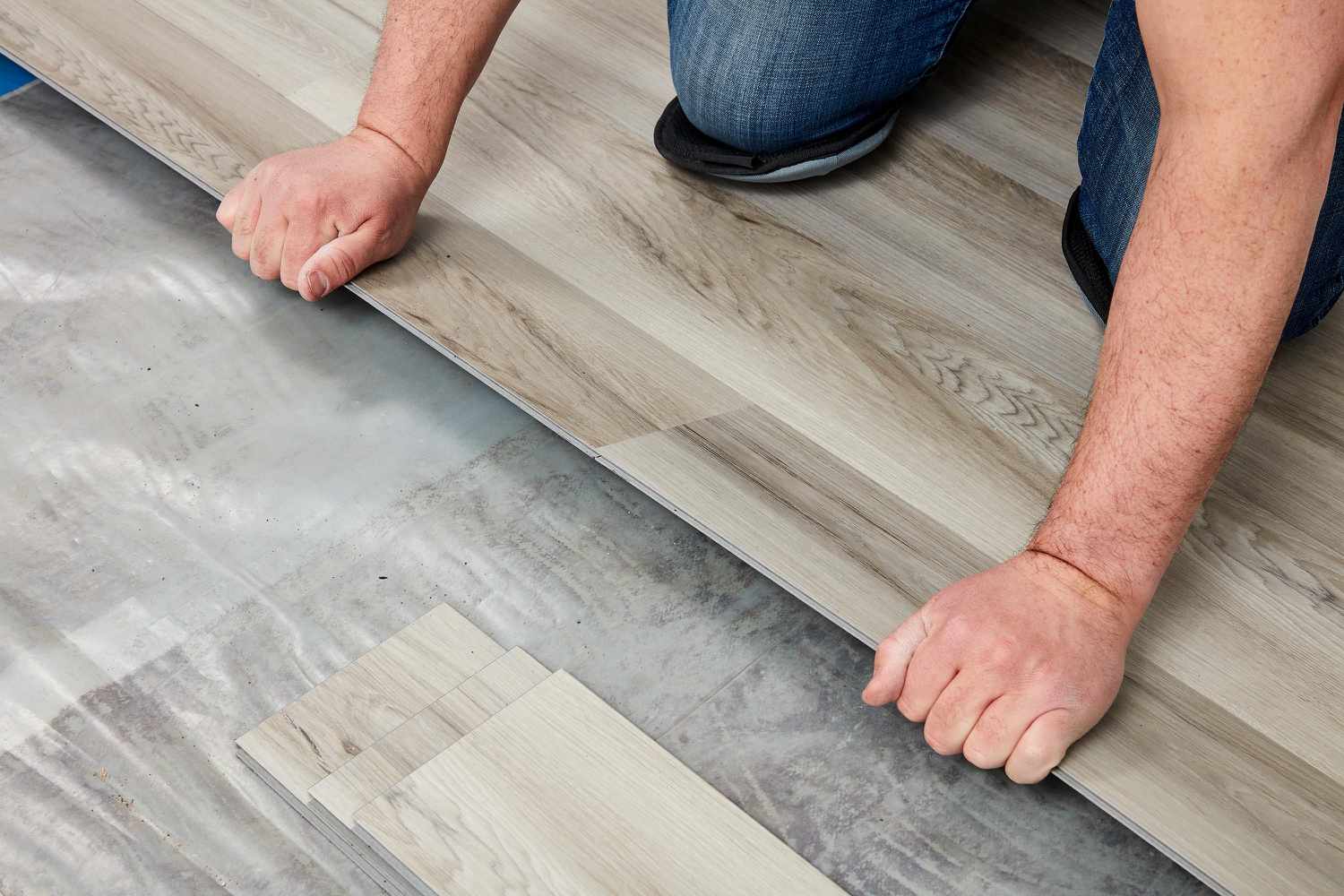If you’re looking to upgrade the floors in your home, vinyl plank flooring should be on your radar. Vinyl plank flooring provides the look and feel of natural hardwood or stone, but with more durability and affordability. In this blog post, we’ll explore the features and benefits of vinyl plank flooring to help you determine if it’s the right choice for your home improvement project.
What is Vinyl Plank Flooring?
Vinyl plank flooring, also called luxury vinyl plank (LVP), is made up of layers of vinyl topped with a photographic applique layer giving the appearance of wood or stone. The planks click or lock together to form the flooring surface. Unlike solid hardwood or engineered wood, the color and texture goes all the way through each plank.
Benefits of Vinyl Plank Flooring
There are many reasons vinyl plank flooring has become popular in recent years:
Easy Installation
One of the best things about vinyl plank flooring is how easy it is to install. The floating click-lock planks allow for a DIY installation without any glue or nails involved. Floating floors are also great for installing over existing floor surfaces, which saves renovation time and money.
Affordable Pricing
Vinyl plank flooring costs a fraction compared to natural hardwood, stone, or porcelain tile flooring. The durable vinyl surface resists scratches and damage better than more expensive natural flooring options. Overall, you get great value for the investment.
Extreme Durability
The layered construction of vinyl plank flooring results in exceptional durability. The floors can withstand dropped items, moving furniture, messy kids or pets, and the wear-and-tear of a busy household. Most vinyl plank flooring comes with a 20-25 year residential warranty.
Waterproof Capabilities
An advantage over natural hardwood and engineered wood is vinyl plank flooring is 100% waterproof. You can install bathrooms, kitchens, laundry rooms and basements without concern about water damage, warping, or mold growth. Spills and accidents are easily cleaned up.
Realistic Looks
It’s amazing how realistic vinyl plank floors look these days compared to materials used in the past. Advanced printing technology allows the vinyl to mimic natural wood grains, stone textures, and tile surfaces. It’s difficult to discern between vinyl plank flooring and the real thing once installed.
Customization Options Galore
There is no shortage of customization options when shopping for vinyl plank flooring. Plank widths of 4-8 inches, mixed lengths, modular patterns, end grains, an array of colors, finishes, grains, grout lines and more allow you to perfectly match your interior design vision.
Sustainability Factor
Vinyl plank flooring is considered one of the more eco-friendly flooring options. Major brands use recycled materials to produce the vinyl layers and backing. Less trees are harvested compared to solid hardwood flooring. Vinyl plank is also recyclable at the end of its lifespan. There are a growing number of sustainable options on the market.
Types of Vinyl Plank Flooring
When browsing vinyl plank flooring at flooring retailers or home improvement stores, you’ll encounter different types distinguished by the construction and composition of the vinyl layers:
Solid Vinyl Plank
As the name implies, solid vinyl plank flooring contains higher vinyl content than other types of plank. The layers are fused together under extreme heat and pressure to create one solid, uniform piece of flooring. Solid vinyl plank has maximum dent and scratch resistance.
Engineered Vinyl Plank
Engineered vinyl plank flooring features multiple layers including a vinyl decor layer, core layer for strength, and backing layer for structure and stability. This type comes the closest to mimicking the layered construction of real hardwood flooring. Engineered vinyl plank offers added flexibility making it great for floors with imperfections.
Rigid Vinyl Plank
Rigid vinyl plank flooring is similar to engineered vinyl plank but the core layer is made up of minerals like limestone, clay, and plasticizers rather than vinyl or wood-based materials. The rigid core gives this type of vinyl plank superior dent resistance. Rigid vinyl plank floors are among the most durable options.
Hybrid Vinyl Plank
Hybrid vinyl plank flooring incorporates new technologies that alter the molecular structure of the vinyl to create enhanced luxury floors. The planks are lighter, softer underfoot, withstand indentation, offer superior acoustic insulation, and surpass the aesthetic capabilities found in first and second-generation vinyl plank flooring.
Luxury Vinyl Tile
In addition to plank floors, vinyl also comes in tile form replicating the look of natural stone, ceramic, terrazzo, and concrete floors. Luxury vinyl tile (LVT) provides immense versatility in styles and patterns to design gorgeous floors for kitchens, bathrooms, and main living spaces.
How to Select Vinyl Plank Flooring
With so many types of vinyl plank flooring on the market, deciding on a product best suited to your needs can get overwhelming. Keep the following criteria in mind while exploring products and brands:
High Moisture Environment Suitability
Determine if the flooring will be installed in areas prone to moisture like basements and bathrooms. Choose vinyl plank flooring with special waterproof structural lasers or an attached underlayment pad to act as a moisture barrier.
Underfoot Feel and Sound
The better quality vinyl plank floors feel warmer, softer, and quieter underfoot. They incorporate a cork backing, foam padding, or added vinyl thickness to improve acoustic and comfort performance. Read online reviews specific to the underfoot experience of the vinyl plank flooring you’re considering.
Installation Method
Luxury vinyl plank flooring comes in glue-down, loose-lay, or click-lock formats. Glue-down provides the most stability over time but is trickier to install. Loose-lay floors use an attached cork backing as the locking mechanism for an easy floating floor with minimal VOC adhesives. Click-lock planks feature an innovative tongue-and-groove system for a DIY floating installation without glue.
Thickness and Wear Layer Measurements
Higher quality vinyl plank flooring contains thicker, more durable layers of vinyl and composites. Look at each product’s specifications to compare. Increased overall plank thickness and vinyl wear layer thickness save money in the long run because the floors better resist damage.
Aesthetic Realism
Study product sample photos to see how realistically the vinyl plank replicates wood, stone, and other flooring materials. The wider and longer the vinyl planks, the better they blend once installed. Consider mixing planks widths, layout patterns, and colors for the most genuine appearance.
Sustainability and Recycled Content
For the eco-conscious shoppers, select vinyl plank flooring made using recycled materials and processes aimed at lowering emissions and the manufacturing carbon footprint. There’s enough variety now to choose floors aligned with your environmental priorities.
Tips for Installing Vinyl Plank Flooring
Installing vinyl plank flooring shares similarities with hardwood and laminate floating floor installation. Here are some best practices to ensure successful DIY or professional flooring installation:
Acclimate the Flooring Planks
For glue-down vinyl plank, lay the sealed boxes in the room where flooring will be installed for at least 48 hours before beginning installation. This allows flooring to adjust to normal living conditions. Acclimation is usually not required for click-lock and loose-lay vinyl plank floors.
Prepare the Subfloor
Make sure the subfloor is flat, clean of debris and spills, and structurally sound before installation. An uneven subfloor can result in poor locking of the planks and gaps forming between them over time. Apply smoothing/flattening compound if needed.
Follow the Layout Plans
Whether choosing to stack bond the planks in straight lines or create an intricate floor design, draw a detailed layout plan and follow it precisely when installing the flooring. Measure twice and cut carefully around door frames, columns, and other built-in elements.
Use Proper Tools
Having the right tools for vinyl plank flooring simplifies installation and achieve professional looking results. Some essentials include a table saw, tape measure, utility knife, pull bar, rubber mallet, ruler, pencil, and jigsaw or miter saw. Consider investing a power miter saw for the cleanest cuts.
Start from the Middle
Don’t start installing luxury vinyl tile or planks from the wall side like some other flooring. Vinyl expands, contracts, shifts seasonally. Begin by snapping a center line chalk line, laying the first plank halves along the line with the tongue sides out. Then build outwards to the walls.
Conclusion
Installing vinyl plank flooring delivers the beauty and realism of natural flooring materials with exceptional waterproof resiliency. Choosing from every style imaginable enables fully customizing flooring to your unique decorative theme and tastes. Following the care guidelines outlined above keeps vinyl plank flooring like new for decades. We hope the knowledge presented empowers your flooring upgrade project using this versatile, durable vinyl plank flooring product.





